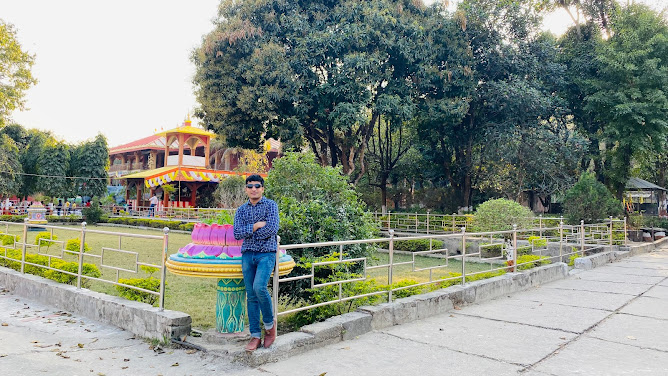Nepal, a country with a predominantly agrarian economy, faces significant challenges related to the uneven distribution of land. Land, as a crucial resource for agricultural production, plays a pivotal role in determining the livelihoods of the majority of the population. This article aims to explore the impact of the uneven distribution of land on agricultural production in Nepal, examining its social, economic, and environmental implications.
Historical Context: The historical context of land distribution in Nepal reveals long-standing inequalities. Feudal structures, where a small elite controlled vast amounts of land, prevailed for centuries, concentrating wealth and power in the hands of a privileged few. The land reform programs initiated during the Panchayat Regime aimed to address this inequality but were limited in their effectiveness. Consequently, landlessness and the concentration of land in the hands of a few persisted, perpetuating socio-economic disparities and impeding agricultural development.
Limited Access to Land: The unequal distribution of land often results in limited access to agricultural resources for marginalized and landless farmers in Nepal. Small-scale farmers, who constitute a significant portion of the rural population, face significant challenges in obtaining access to fertile lands suitable for cultivation. The lack of available land hampers their ability to engage in productive agricultural activities, leading to reduced yields and income disparities. Moreover, the scarcity of arable land also restricts farmers' ability to implement modern farming techniques, adopt improved agricultural technologies, and make necessary investments in irrigation systems, mechanization, and other infrastructure. Consequently, small-scale farmers struggle to break free from subsistence farming practices and transition towards more commercial and market-oriented agricultural production.
Moreover, the more pronounced the land inequality in a country, the greater the potential for reduced overall agricultural production. When land distribution is highly unequal, small farmers often find themselves without access to agricultural land, leaving them unemployed or with limited livelihood options. This results in a significant loss of human capital and agricultural expertise, as small farmers possess valuable knowledge and skills that contribute to agricultural productivity. With limited opportunities to engage in agricultural activities, small farmers may be forced to seek alternative employment outside the agricultural sector, further contributing to the decline in agricultural production. The exclusion of small farmers from the agricultural workforce not only hampers their individual well-being but also has broader ramifications for the country's food security, as their collective contributions to the national agricultural output are diminished. Therefore, addressing land inequality becomes crucial not only for social justice but also for the overall agricultural productivity and economic stability of the country (Dahal & Khanal, 2019).
Subsistence Agriculture and Food Security: The unequal distribution of land in Nepal contributes to a prevalent reliance on subsistence agriculture. Due to limited access to land and resources, small-scale farmers predominantly engage in subsistence farming practices, focusing on meeting their immediate food needs rather than generating a surplus for market exchange. This dependency on subsistence agriculture has significant implications for food security in the country. It makes Nepal vulnerable to fluctuations in production caused by factors such as weather conditions, pests, and diseases. In times of reduced yields or crop failures, subsistence farmers lack sufficient surplus to sustain their households and face heightened risks of food insecurity and malnutrition. Furthermore, the lack of surplus production for market exchange limits the income opportunities for small-scale farmers, perpetuating poverty and hindering rural development.
Socio-Economic Disparities and Rural Poverty: The concentration of land in the hands of a few exacerbates socio-economic disparities and perpetuates rural poverty in Nepal. With limited access to land, small-scale farmers face reduced income opportunities, as they struggle to generate sufficient profits from their agricultural activities. The resulting income disparities further marginalize these farmers and hinder their ability to escape poverty. Moreover, landlessness and the absence of secure land tenure rights among vulnerable populations make it challenging to access credit and financial resources. This lack of access to credit inhibits investments in modern agricultural practices and technologies, such as high-quality seeds, fertilizers, machinery, and irrigation systems, which could enhance productivity and increase farmers' incomes. Consequently, the cycle of poverty persists, with limited economic mobility and a higher risk of vulnerability to economic shocks, perpetuating the socio-economic divide between landowners and landless farmers.
Environmental Implications: The uneven distribution of land in Nepal also has significant environmental implications. As small-scale farmers struggle to find sufficient agricultural land, there is a growing tendency to encroach upon ecologically fragile areas such as forests and hillsides. This encroachment leads to deforestation, soil erosion, and ecological imbalance, exacerbating the vulnerability of rural communities to natural disasters such as landslides and floods. Deforestation not only reduces the availability of forest resources but also disrupts ecosystems and contributes to climate change. Soil erosion, triggered by unsustainable farming practices on marginal lands, degrades soil fertility and reduces agricultural productivity over time. The environmental consequences further compound the challenges faced by farmers, as they are confronted with diminishing resources, increased vulnerability to natural disasters, and a deteriorating ecosystem.
Conclusion: The uneven distribution of land in Nepal poses significant challenges to agricultural production and rural development. Limited access to land, perpetuation of subsistence farming, socio-economic disparities, and environmental implications all contribute to a cycle of poverty and hinder the country's agricultural potential. Addressing these issues requires comprehensive land reform programs that prioritize equitable land distribution, strengthen land tenure security, and promote sustainable agricultural practices. By ensuring broader access to land and empowering small-scale farmers with necessary resources and support, Nepal can unlock its agricultural potential, enhance food security, and promote inclusive rural development for a more prosperous future.
Gyawali, D. R.(2020). Land Redistribution Policies and Their Impact on Agricultural Productivity and Livelihoods in Nepal. Kathmandu.
Gurung, G. B.(2018). Landlessness and Rural Poverty: Evidence from a Household Survey in Nepal. Journal of Rural Studies.
Dahal, M. K., & Khanal, U. (2019). Unequal Land Distribution, Agricultural Productivity, and Rural Poverty in Nepal. Land Use Policy.












